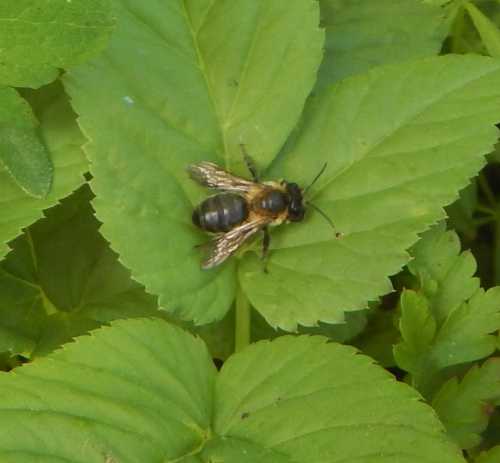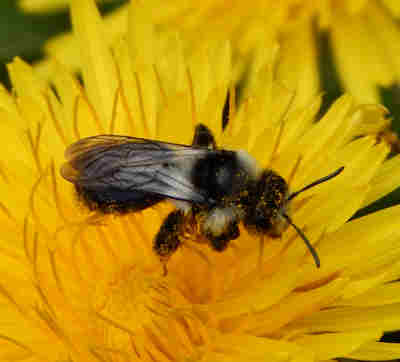The Chocolate Mining Bee
- Andrena carantonica or Andrena scotica
Updated: 24th February 2021
The 'Chocolate Mining Bee' (also known as Andrena scotica or previously as Andrena carantonica) is a solitary bee species. I was fortunate to have this pair of chocolate mining bees ‘turn up’, or I should say ‘fall out of nowhere’ whilst gardening. The name ‘Andrena’ tells us that this bee is a mining bee.
I had just moved a currant bush in a pot, and
topped up the pot with water, when this mating pair tumbled onto the wet soil.
I gently picked them up, and there they remained on my hand - the male dangling from the female, for no longer than a minute or two, just long enough for my husband to fetch the camera and take a photograph before the two bees parted, and also for me to take a good look at the bees.
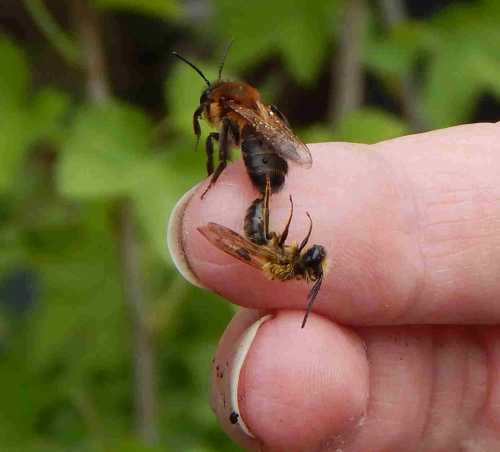 Above: A pair of Andrena scotica - chocolate mining bees, mating. The upside down, dangling bee is the male.
Above: A pair of Andrena scotica - chocolate mining bees, mating. The upside down, dangling bee is the male.About the chocolate mining bee
The male
has a slightly narrow body in comparison with the female.
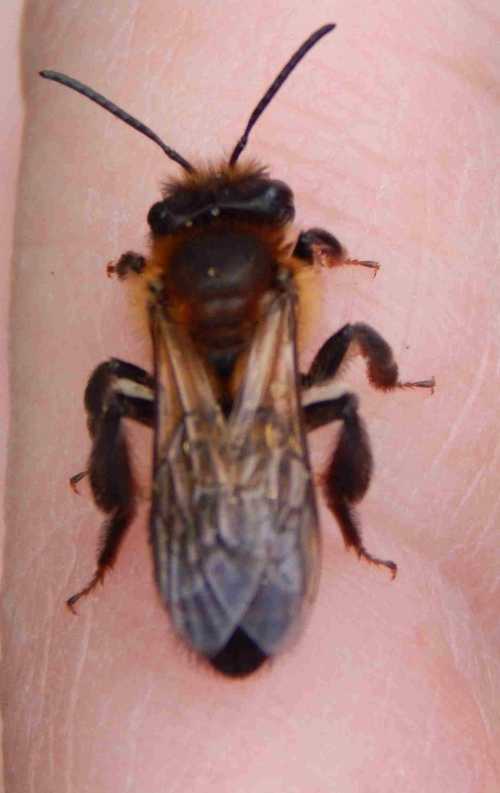 Above: Andrena scotica - Female. Above: Andrena scotica - Female. |
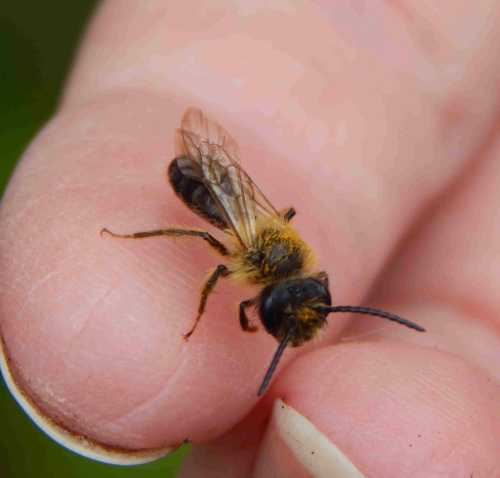 Above - Andrena scotica Male. He is smaller than the female, with a narrower body. The thorax is paler in colour than that of the female. Above - Andrena scotica Male. He is smaller than the female, with a narrower body. The thorax is paler in colour than that of the female. |
The male is also smaller than the female, and the thorax is paler in colour.
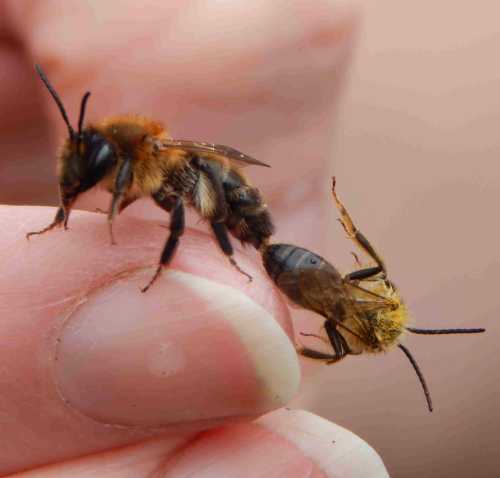 The female chocolate mining bee (the larger of the two bees) has tufts of hair on the hind legs - the scopa. These collect pollen.
The female chocolate mining bee (the larger of the two bees) has tufts of hair on the hind legs - the scopa. These collect pollen.
Note the tufts of hair on the hind leg of the female. These get covered in pollen. Note they have quite long antennae.
What are the foraging preferences of chocolate mining bees?
Andrena scotica are seen in spring, foraging on spring flowering
shrubs and plants. They especially like to visit willows, hawthorns, fruit trees, maples, blackthorns, dandelions, umbellifers, hawk's beards and brambles, all of which are present in my surrounding area. They will also visit brassica plants if left to flower.
Nesting habits
They may nest singly or in small, loose groups on sunny banks and slopes, and often amongst leaf litter. Several females may share a common nest entrance.
Is it Andrena carantonica or Andrena scotica?
It's very frustrating at times, keeping up with various changes in classifications and names. When I originally wrote this page, as far as I was aware, it was Andrena Carantonica.
I have since noted that this species is and has been treated differently by entomologists. Author of Field Guide To Bees Of Great Britain and Ireland, Steven Falk says:
"Note that this species has been known as A. carantonica in recent literature and has also been known as A. jacobi."
Cleptoparasites
Andrena scotica is one of the species targeted by a number of nomad bee species, including:
- the Flavous Nomad bee - Nomad flava (pictured below) and
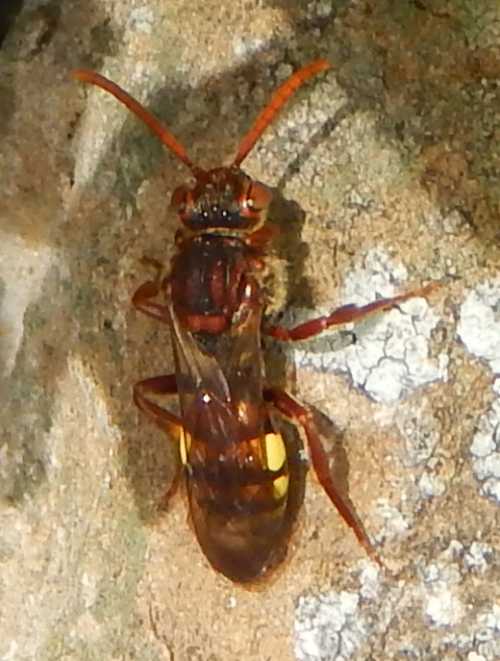 A Flavous Nomad bee - this species targets nests of the chocolate mining bee, among others
A Flavous Nomad bee - this species targets nests of the chocolate mining bee, among others- Marsham's nomad bee - Nomada marshamella.
Both of these cleptoparasites may be seen lurking outside the entrance of Andrena scotica nest burrows.
More bees...............
If you found this page helpful or interesting, I'd really be grateful if you would share it with others - if not this page, perhaps another, such as Gardening For Bees.
Thank you so much :) .
